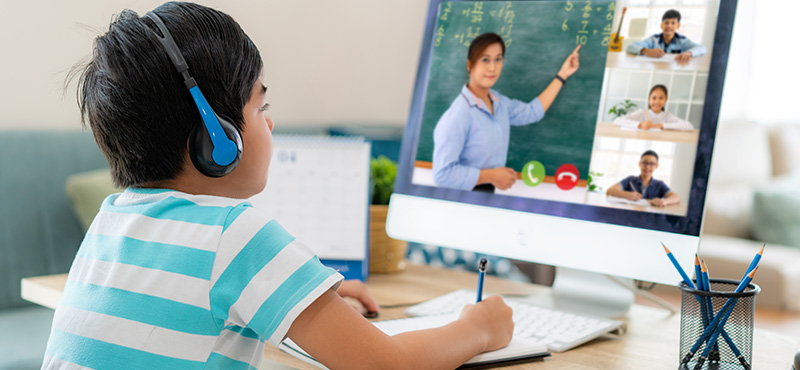Over the course of a week in March 2020, schools across the country had to unexpectedly close their doors amidst the start of the COVID pandemic.
Teachers, students, parents, and schools were caught off guard during this transition to distance learning – especially given that some households did not have access to high-speed internet.
Fortunately, broadband providers, businesses, schools, community organizations and governments quickly came together – through a variety of programs and initiatives – to get families connected to the internet so they can access distance learning.
But even as the brunt of the pandemic seems to now be behind us, government and community leaders are realizing that internet access will remain an essential learning tool for students in our “new normal.”
Here is what’s being done to ensure that students will continue to have access to low-cost or free internet at home.
Temporary Public-Private Partnerships Become Long-Term
During the first six months of the pandemic, schools and internet providers worked around the clock—often literally—to get free or low-cost internet to students.
Many of these public-private initiatives were brought together under the umbrella of the K-12 Bridge to Broadband program that connected broadband providers with school districts to identify in-need students and provide their households with an internet connection. Here are a few examples of those initiatives:
- Chicago Connected – Chicago Public Schools (CPS) formed a public-private partnership with Comcast to offer high-speed internet for CPS families who were most in need.
- Everybody Learns – the state of Connecticut and Cox Communications came together to expand connectivity and offer low- and no-cost broadband options, as well as technology, to students.
- Connect2Compete – a collaboration between Mediacom Communications and the school district of Waterloo, Iowa quickly mobilized to close the gaps for students without a home internet connection.
Thanks to government support, many of these original initiatives that were launched during the pandemic have been able to continue. Chicago Connected has received funding to continue enrolling eligible families for free, high-speed internet through at least November 2024. In Waterloo, advances in connectivity will be wrapped into the school district’s Return-to-Learn plan. And Connecticut continues to explore sustainability models to allow for cable broadband vouchers while actively promoting federal broadband affordability programs.
Making Internet Access Permanent for Low-Income Households
Acknowledging the critical need for all Americans to have access to broadband during COVID, the Federal Communications Commission[DA1] launched the Emergency Broadband Benefit (EBB) Program that enabled eligible low-income households to receive a discount on the cost of broadband service and certain connected devices.
While the EBB Program was viewed as a temporary benefit tied to the pandemic, Congress acted in November 2021 to create a long-term replacement – the Affordable Connectivity Program (ACP). As of February 2022, 10 million households were enrolled in ACP and are now connected.
One of the ACP enrollees is Alicia Jones, a mother of two who benefited from the EBB Program. Jones states, “…with all of the other struggles we faced [during the COVID pandemic], providing internet for my family was not one of them. Through our high-speed broadband provider Comcast, we were able to stay connected with family, receive telehealth healthcare, go to classes, and access other necessary resources.”
Most recently, the Biden-Harris Administration secured commitments from 20 internet service providers in May – including Comcast, Charter, Cox, and Mediacom – to offer ACP-eligible households a high-speed internet plan at no cost, after redeeming their monthly subsidy.
To see if you are eligible for ACP and claim your Affordable Connectivity Program benefit to access distance learning and so much more, visit GetInternet.gov.
